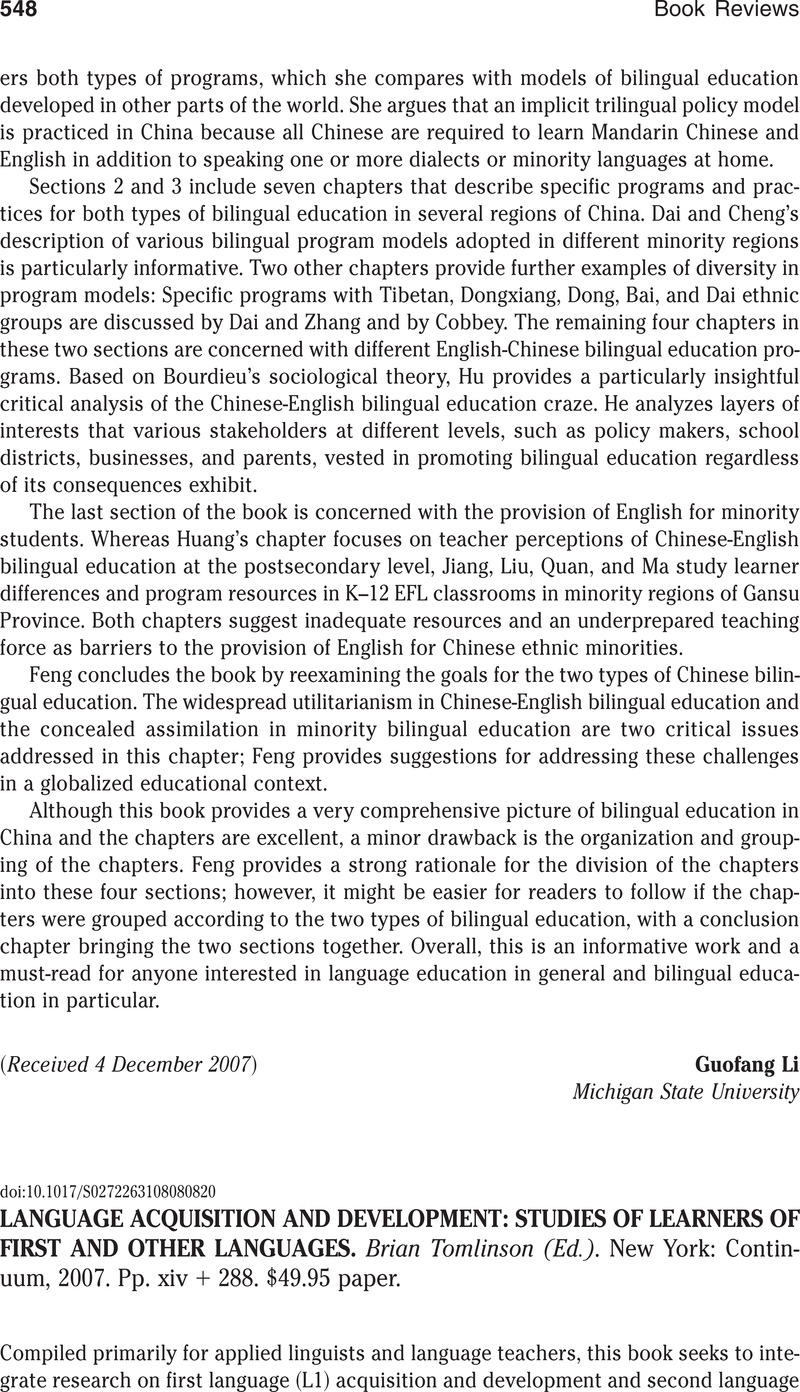No CrossRef data available.
Article contents
LANGUAGE ACQUISITION AND DEVELOPMENT: STUDIES OF LEARNERS OF FIRST AND OTHER LANGUAGES. Brian Tomlinson (Ed.). New York: Continuum, 2007. Pp. xiv + 288. $49.95 paper.
Published online by Cambridge University Press: 29 October 2008
Abstract
An abstract is not available for this content so a preview has been provided. Please use the Get access link above for information on how to access this content.

- Type
- BOOK REVIEWS
- Information
- Copyright
- Copyright © Cambridge University Press 2008
References
REFERENCES
Cook, V. (Ed.). (2002). Portraits of the L2 user. Clevedon, UK: Multilingual Matters.CrossRefGoogle Scholar
Gardner, R.C. & Lambert, W.E. (1972). Attitudes and motivation in second-language learning. Rowley, MA: Newbury House.Google Scholar
Han, Z. (2004). Fossilization in adult second language acquisition. Clevedon, UK: Multilingual Matters.CrossRefGoogle Scholar
Pinker, S. (1999). Words and rules. In Sorace, A., Heycock, C., & Shillcock, R. (Eds.), Language acquisition: Knowledge representation and processing (pp. 219–242). Amsterdam: Elsevier.Google Scholar
Plaza Pust, C. (2000). Linguistic theory and adult and language acquisition. Bern: Peter Lang.Google Scholar
Yang, C.D. (2002). Knowledge and learning in natural language. Oxford: Oxford University Press.Google Scholar


